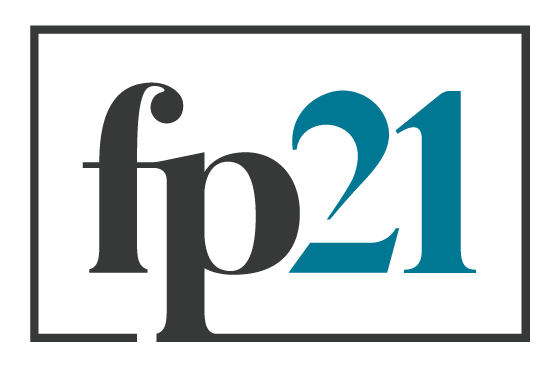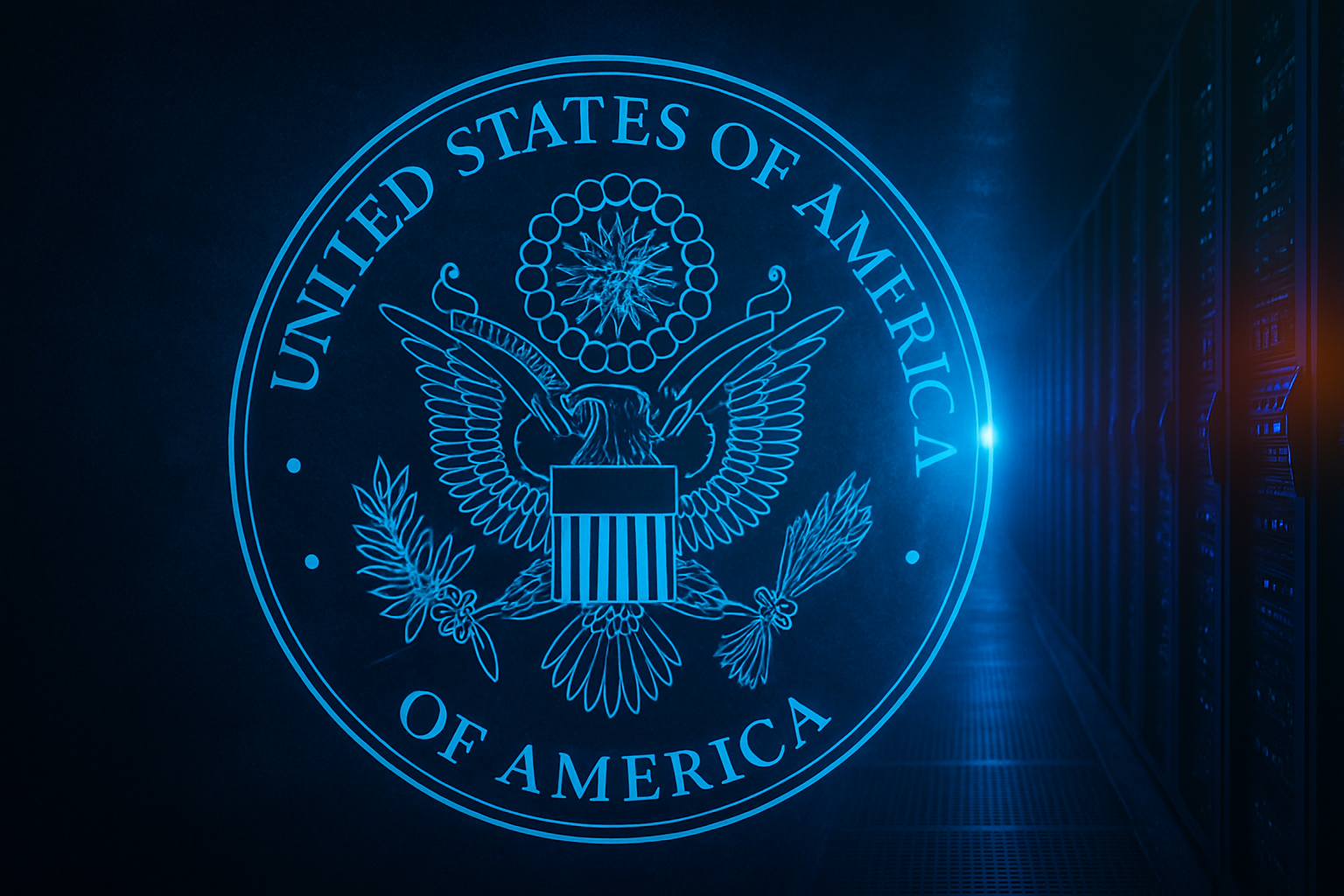Building on a Bedrock of Innovation at State: Improving Tech Capacity To Improve America’s Foreign Policy
By Joel Burke | June 9, 2025
Today, tech expertise in government is not a nice-to-have. AI dominates political discussions, national security concerns revolve around tech competition with China, and America’s economic strength is inseparable from the tech sector.
Integrating technology into the government is essential for the pursuit and protection of American interests – nowhere more so than in the national security and foreign policy arena. And yet, historically, the State Department has been seen as something of a stodgy institution slow to adopt and fully roll out new tech, except for a few isolated cases. Now, State must shed that image and build on the initial bedrock of AI innovation it has forged to become a leading force to deliver on America’s foreign policy objectives. This report explores a brief history of IT projects at State and presents concrete ideas for improving State’s technical capacity.
A Checkered History of Tech Implementation
In late 2021, the Office of the Inspector General (IG) at the State Department released its review of the ConsularOne Modernization Program. The ConsularOne program was launched in earnest in 2011 in an effort to consolidate around 90 consular systems into one common framework, a bold initiative meant to create significant efficiencies across the State Department and to help save time and effort for workers in the Bureau of Consular Affairs. Ten years into its development, the program had missed numerous deadlines, failed to roll out except for in very limited pilots, and its costs had ballooned. According to reporting at the time, “The [Inspector General’s] office estimates the cost of ConsularOne ranges from $200-to-600 million,” but poor agency oversight of relevant project contracts created a situation where the IG was “unable to determine the total cost of the ConsularOne modernization program with any precision.” The IG report found numerous reasons for the failures, but several core challenges included long-term workforce issues and a lack of leadership and accountability.
The failure of the State Department to deliver results on a modernization program is emblematic of a sweeping problem across the federal government: a lack of capacity when it comes to technology procurement, development, and implementation. According to a 2015 Brookings article, “The U.S. government spent $75.6 billion on IT projects in 2014… According to The Standish Group’s report, from 2003 to 2012, only 6.4 percent of federal IT projects with $10 million or more in labor costs were successful.” A 2021 GAO report estimated that the government would spend over $100 billion in that fiscal year on information technology, with most of the funds going to operate and maintain existing systems. “Historically,” the report concludes, “the federal government has had difficulties acquiring, developing, and managing IT investments.”
Given the lack of sustained reform in federal IT acquisition, development, and maintenance, there is little reason to believe the situation has improved. Numerous former government technologists including U.S. Deputy CTO Jennifer Pahlka, VA CTO Marina Nitze, and CTO of the EPA Greg Godbout have raised concerns over the government’s ability to effectively deliver on government tech modernization projects without reform (including in Pahlka’s and Nitze’s respective books Recoding America: Why Government Is Failing in the Digital Age and How We Can Do Better and Hack Your Bureaucracy).
At State, an inability to regularly deliver on IT modernization means that projects end up draining critical resources and pulling focus at a time when the State Department faces an increasingly challenging global diplomatic environment. Failed IT projects also create cybersecurity risks, opening the door to hackers at a time when foreign adversaries have repeatedly used such attacks to glean critical government information. If State is unable to routinely develop basic IT infrastructure on time and on budget, there can be little doubt that it will also fail to adopt impactful new technologies like artificial intelligence in any meaningful way (a core focus of the Department under Secretary Blinken which received significant media attention). At the same time, the Department could end up wasting billions of taxpayer dollars in the coming years if it fails to adequately manage projects like the ongoing EVOLVE IT contract, an indefinite-delivery, indefinite-quantity solicitation with a $10 billion ceiling, the largest such contract issued by the State Department in its history.
Opportunities for Reform
The State Department, like most government agencies, has become enamored with the potential for AI to make the Department more efficient and to enable new capabilities without fundamental reform. After the launch of President Biden’s Executive Order on AI, Politico reported in 2024 that State’s “hiring spree” would be around three dozen AI experts and that it “set a goal of hiring 38 more bureau chief data officers in the next five years, adding to the 13 of these officers it hired in the last year and a half.” The Department is also experimenting with AI for a variety of use cases like synthesizing diplomatic cables with AI and creating an open-source powered digital research assistant. These efforts build on the significant progress to create internal capacity to leverage data to make decisions during the first Trump administration with the creation of a Center for Analytics, which, according to Fedscoop, “plans to outfit everyone from diplomats to Secretary of State Mike Pompeo with data tools and training.”
But while AI can be a powerful tool, it is not a panacea, especially in the absence of concomitant process reforms. New products can soon become vanity projects or slide into irrelevance and eventually shut down. For example, tools like Diplopedia, an internal wiki of foreign affairs information, or Corridor, an internal social networking site, have since been deprecated. Well-thought out attempts by civil servants to innovate should be applauded and rewarded – but State’s attempts to foster decentralized entrepreneurship typically fall short. The procurement and implementation of new flashy technologies without real capacity to maintain, further develop, and effectively utilize them across the organization in a meaningful way should not be used in an attempt to paper over foundational issues with IT procurement and development at the Department.
While the State Department can and should experiment with new technologies, it needs to ensure that it first focuses on solving its internal tech capacity issues and has the right processes in place to effectively deliver on its technical needs, namely one that takes a more agile approach led by technologists with the capacity to effectively manage requirements, speak to users, and write procurements that lead to delivering real solutions instead of “concrete boats” (a concept for failed procurement strategies elucidated by Jen Pahlka).
Investing in a Tech-First Workforce
There is no one way to solve State’s difficulties with modernization, and certainly no easy path, but the Department should start with its people. Full-time technologists inside State are the linchpin in the development, acquisition, rollout, and maintenance of the technology solutions. High-skilled staff are essential for helping the Department to evolve into something resembling a modern entity; one that can regularly use technology more advanced than fax machines. While not the full answer to developing an organization that can deliver useful tech on time and on budget, a competent and well-resourced technical workforce embedded across the department, including nontraditional divisions such as procurement, is a necessary prerequisite.
But when it comes to building up a robust tech workforce, the State Department has long struggled. According to a 2022 GAO report, State has faced challenges with both the attraction and retention of tech talent. This is thanks to a variety of factors including low starting salaries, especially relative to private sector peers, unclear job announcements and duties, narrow marketing and recruitment strategies, and a hiring process that can take up to two years. This leads to a situation where “qualified candidates either did not apply for IT jobs or found other jobs while they were waiting to be brought on board.” In the end, this means State is not able to attract and retain the best and brightest, especially given how many other options top technologists have in the private sector. In their proposal for a novel solution of creating a STEM talent pool to address the problem, the US Digital Service’s former Administrator Eddie Hartwig has talked about the challenge, saying that “It often takes the federal government months to hire for critical science and technology (STEM) roles, far too slow to respond effectively to the demands of emerging technologies (e.g., artificial intelligence), disasters (COVID), and implementing complex legislation (CHIPS).”
At the same time, State’s workforce has historically suffered from more than just a lack of personnel, but a lack of leadership and accountability. According to a 2020 Federal Employee Viewpoint Survey, more than 40% of respondents in the office responsible for delivering the ConsularOne Modernization Program said that “their office didn’t take appropriate steps to deal with poor performers.” In a healthy organization, effective managers mentor poor performers, or separate employees who consistently fall short. Neither impulse appears to be particularly common at State, where officials are typically encouraged to sink or swim. Great managers bring out the best in their teams and consistently meet objectives with limited resources. In contrast, nothing is more demoralizing to an organization than when ineffective managers seem to fail upwards, instead of rewarding those who consistently go above and beyond.
There are any number of potential fixes to attract and retain top tech talent, many of which the State Department has pursued, including providing bonuses to employees who attain cybersecurity certifications, expanding IT personnel recruitment to military installations, and even investing in paid advertising to attract job candidates. The Subject Matter Expert Qualification Assessment (SME-QA) was launched with much fanfare to streamline hiring, but seems to be infrequently used.
The State Department has also failed to effectively leverage the use of tech-focused fellowship programs. State has a history of using fellowships for recruitment and according to Heritage Senior Research Fellow Simon Hankinson in a 2023 article about State’s self-immolating culture, two fellowship programs accounted for ~20% of total Foreign Service recruitment in recent years. One of those fellowships is tech focused: the Foreign Affairs Information Technology (FAIT) Fellowship, established in 2017 is modeled on more established fellowships with a “focus on supplying in-demand tech talent to the Foreign Service and diversifying its ranks.” While the fellowship has been fruitful in attracting tech talent, its impact is stymied by the program’s scale, with only up to 15 fellows who serve a five year commitment chosen annually participating.
The Trump administration has an opportunity to dramatically expand and overhaul the FAIT fellowship program in order to take advantage of the opportunities which it presents. To most effectively leverage the program, State should develop partnerships with institutions like Dakota State University (DSU). DSU has been a pioneer in developing unique partnerships with government agencies, including ArmyCyber and the NSA, creating a steady stream of uniquely qualified candidates for government agencies to recruit. Second, the fellowship program needs to focus on filling out the ranks of centers for IT delivery and procurement. This includes the Bureau of Diplomatic Technology (formerly the Bureau of Information Resource Management) which provides IT infrastructure including from desktop support and data center operations to the modernization of core IT systems that make up the Bureau’s $2.55 billion global IT portfolio, the Office of the Procurement Executive which handles much of State’s procurement work, as well as functional bureaus that engage in large IT program development such as the Bureau of Consular Affairs.
To fulfill these varied needs, FAIT needs to scale rapidly and dramatically. In an organization the size of the State Department with tens of thousands of employees and contractors globally, fifteen new hires a year is not even a rounding error. By ramping up the program and bringing in at least 100 new technologists each year to key departments and offices for IT procurement and development, not only will State begin to develop the technology capacity it needs, these young technologists are likely to introduce positive cultural changes to the teams around them, driving more experimentation and innovation than those who have been working in government service for many years. To further the potential impact of the fellows, small technical tiger teams should be created with fellows paired with experienced foreign service officers. This effort could learn from Palantir’s model of forward deploying staff – sending teams into various missions worldwide and working hands on to develop solutions in collaboration with those on the frontlines who understand the real pain points.
Finally, this influx of tech-talent will require leadership that deeply understands technology. President Trump’s nomination of experienced technologist Jacob Helberg as Undersecretary of State for Economic Growth, Energy and the Environment, is a strong signal that technologists who deliver results will be valued at State. Given Helberg’s experience at Palantir, it also presents a unique opportunity for the Department to adopt lessons from one of the leading government technology vendors and to emphasize the importance of tech in every facet of State’s work.
Tech expertise means fewer expensive IT failures, fewer cost overruns from poorly scoped procurements, and dramatically higher efficiency throughout the Department. And while such fellowship programs aren’t cheap – FAIT provides up to $43,500 annually for two years in academic funding and select fees as well as stipends for two summer internships at the State Department in return for five years of service as Diplomatic Technology Officers – they can drive tremendous returns for the organization. Skilled tech implementation will allow the cost-effective development of tools and infrastructure which allow the various bureaus to more effectively execute their missions, including promoting American businesses in global markets. Not to mention the possibility of technologists inside the department actually building things themselves and the potential cost savings from making now unnecessary bureaucrats and consulting contracts redundant. The cost savings of bringing more technical expertise in house are tremendous and well worth the investment.
Conclusion
In an era of bloated deficits and high-stakes great power competition, failing to deliver on modernization projects and effectively utilize technologies like AI would be disastrous for American national security. Bringing tech expertise into government is no longer a nice to have, it is an absolute necessity. The State Department has a unique opportunity to better leverage an existing program with minor changes and additional investment, which pales in comparison to the Department’s total budget. By reforming and expanding FAIT, along with other common sense reforms like making it easier to fire underperforming employees (and hire new employees faster than two years), State can shed its image as a stodgy bureaucracy and start delivering on modernization projects that will make the Department a more efficient and effective force for American diplomacy on the global stage.


